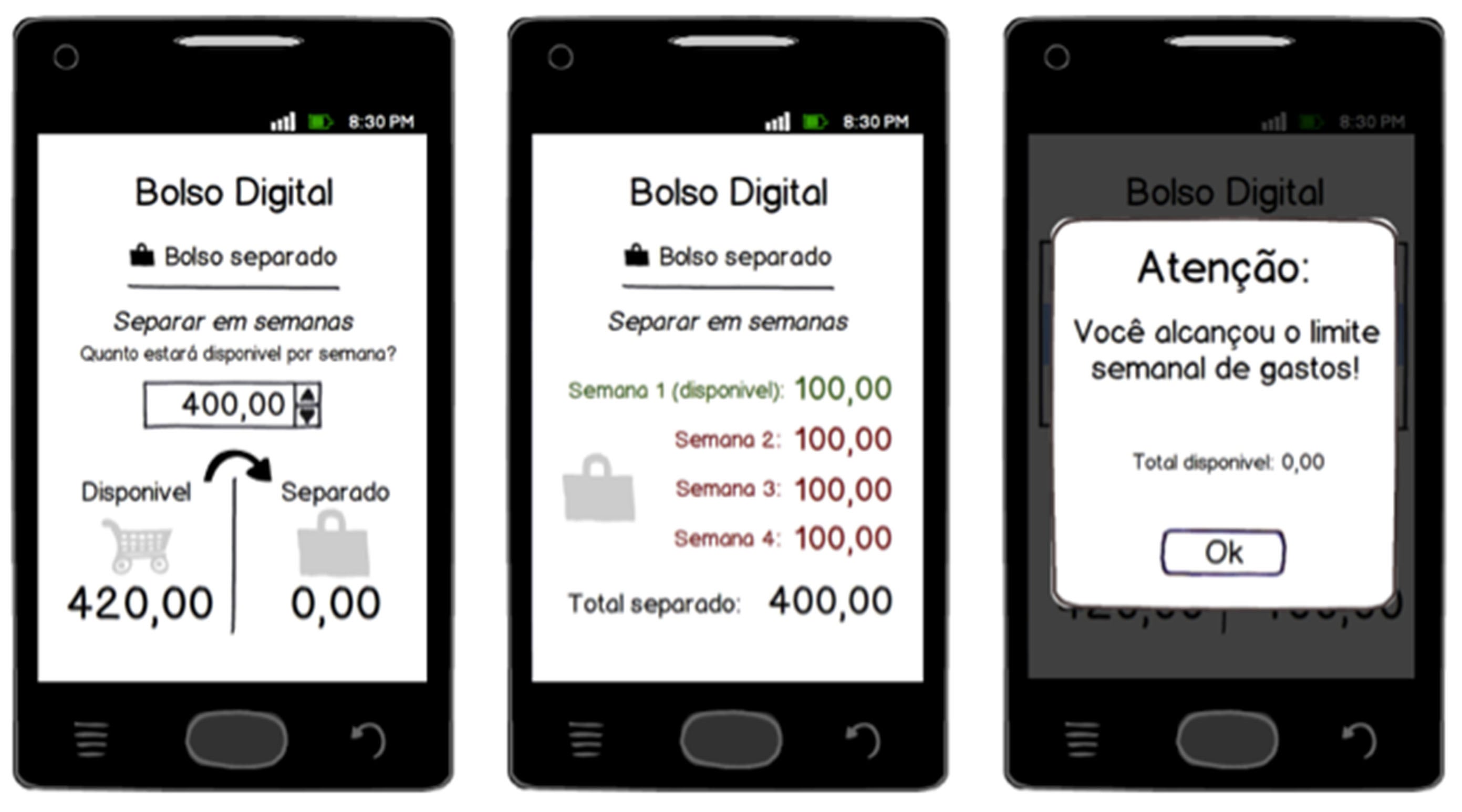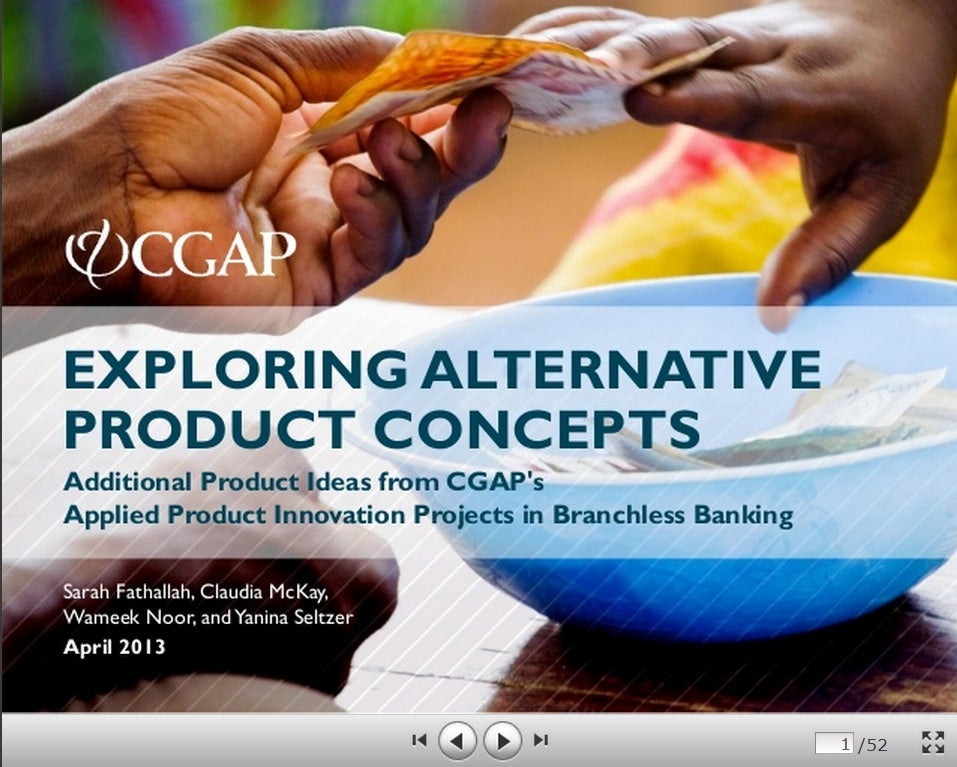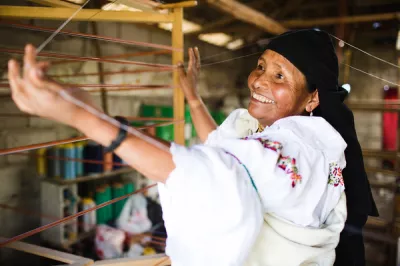Open Sourcing Product Innovation
“With cash, you can’t spend what you don’t have,” Maria in Brazil shared during an interview when she was referring to overspending on her credit card. João told us that he used to have a credit card years ago, but never wanted one again as he overspent and was still struggling to pay back the bank what he owed. Many people told us similar tales. These experiences point to an important insight: people want limits and control over their spending - not more temptation or credit.
This interview took place during an Applied Product Innovation project (see our API deck and ongoing blog series for more information) with Bradesco Bank and design firm IDEO. These customer insights led the design team to brainstorm a product concept that would help people set limits on their spending but still have a similar feel to cash. The team came up with an idea to test with customers: a feature on the mobile wallet that would allow people to set weekly limits. "Weekly Limits" (Separar Dinheiro Semanal) would help customers better plan their cash spending by dividing it into weekly amounts that act as spending ceilings for that time period. For instance, the customer could select an amount from the total balance, $200 for example, and separate it into four weekly limits of $50 each. They would receive a notification once they reached the weekly limit. The concept was tested with customers through simple paper screen prototypes (see below).
 Product Prototypes
Product Prototypes
After a round of iteration with customers, the team found that most people preferred not to divide their income because their weekly spending changed considerably week by week and their income was variable as well.
The weekly limits concept was just one of nearly a hundred products conceptualized during the ideation phases of our three product innovation projects in Brazil, Mexico and Uganda. Each product concept met a deeply-felt need of the target consumers interviewed, and often built in incentives and rewards to drive consumer usage and activity. The user interface was an important focus for these products in order to drive usage of basic formal financial services in a fun and enjoyable way.
Some of the products concepts include competition-based savings groups, leveraging online social networks, tapping into mobile and agriculture-based data to build credit history for customers that otherwise would never have any, warehouse storage facilities that help mitigate price volatility for goods produced by smallholder farmers, and even lottery-based microinsurance schemes.
These very interesting product concepts and features were not chosen by providers for commercial launch, even though there was a lot of enthusiasm around them and they met important consumer needs. They were not chosen for a number of reasons specific to each particular provider, industry and/or market. In some cases there were regulatory constraints, in others the risk appetite of the provider impacted the decision and in some cases, like the “Weekly Limits” product, customers were just more excited about another concept. Despite this, we believe these might be useful to providers in other geographies that find themselves in different circumstances and that might be inspired by creative new concepts. Since all the ideas originated in a very creative process based on intimate conversations with clients, we think they’re all potentially valuable. For this reason, a key component of our applied product innovation work is to make the intellectual property around the conceptualized products completely open. We are sharing all of these concepts in a presentation and will soon be —hosting an Open Intellectual Property (IP) platform for product innovation on our website. As concepts are developed by design firms with our project partners, we commit to sharing all of those that will not be commercialized by the organizations we work with.
The philosophy behind being open is that data should be available to anyone and people can use and reuse the data as they wish, without any sort of copyright issues or infringements. Many folks in the technology world have pushed hard on this, and have thus formed an important movement around open source. For example, the World Bank Group has made an important push for Open Data as well. Being open is at the core of CGAP’s mission. We pride ourselves in being an organization that shares messages and lessons from all of our engagements. For this reason we believe sharing products' IP widely is not just important but imperative; particularly if it will aid us and all our stakeholders in meeting our most important joint agenda: expanding financial inclusion.
Being open about the products that didn’t work can be an important mandate for all providers—as what is discarded by some can be a treasure for others.

----- The authors work on the API learning workstream at CGAP.




Comments
As a volunteer with COSM, the
As a volunteer with COSM, the Community for Open Source Microfinance (www.openmf.org), I strongly commend this effort to make your intellectual property widely available.
COSM is the new open source community that has taken over the development of the MIFOS core banking system originally developed by the Grameen Foundation. I look forward to seeing how we can incorporate and commercialize these innovations within our open source technology stack.
Steve-- Thank you for your
Steve-- Thank you for your comment. We would love to connect with COSM. Please e-mail me at yseltzer@worldbank.org and we can set up a time to talk.
Add new comment